Balance: An Overview of HCI from the perspective of information theory
Published:
Video of My Lecture
Lecture Script
I gave a lecture during a English class during Spring 2022. In this lecture, I conceptualized the human-computer interaction (HCI) from the perspective of information theory for the audience mainly from other majors in my university. The script is presented below.
Hello, welcome to Jam’s Talk! Here is Jamie Speaking. So, as presented on the slides, my topic today is about an overview of human-computer interaction, which is also my main research area. Last year, when I hung out with my friends after passing the post-graduate entrance examination of Sun Yat-sen University, one of them just asked me a question, “hey bro, what exactly is human-computer interaction?” Suddenly, I was just stunned and hesitant. How to explain my major to an amateur in an efficient way, without referring to those complicated theories and models?
At that time, I just prevaricated that, well, it’s about any forms of interactions between end-users and computer-driven devices. For example, every time you tap on your smart phone and get the functional feedbacks, an interaction occurs. I have to admit that it was pale and just sounded like crap. Unfortunately, it was. Such feedbacks aroused more questions from my friends, hitting a status of “imbalance”. Now, the same question recurs.
After learning and practice during my postgraduate period, today, I am going to optimize my previous answers to you.
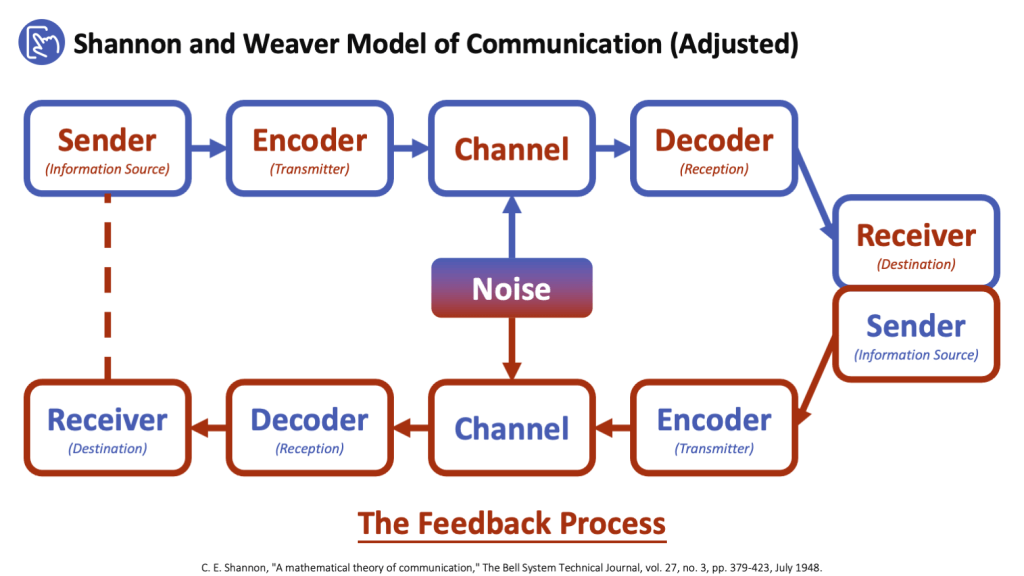
Before talking about the interaction process between human and computers, I would like to introduce a great analytical model to explain the mechanism of the interpersonal interaction, which was derived by a genius named Shannon. So, how do we communicate with each other? Generally speaking, the process of communication, or a conversation, contains two successive stages, you talk I listen and I talk you listen, and then repeat, again and again, unless we had a quarrel and everything becomes chaos, or our topic is ended. To be more specific, we experience the process during the dialogs like this, involving five stages.
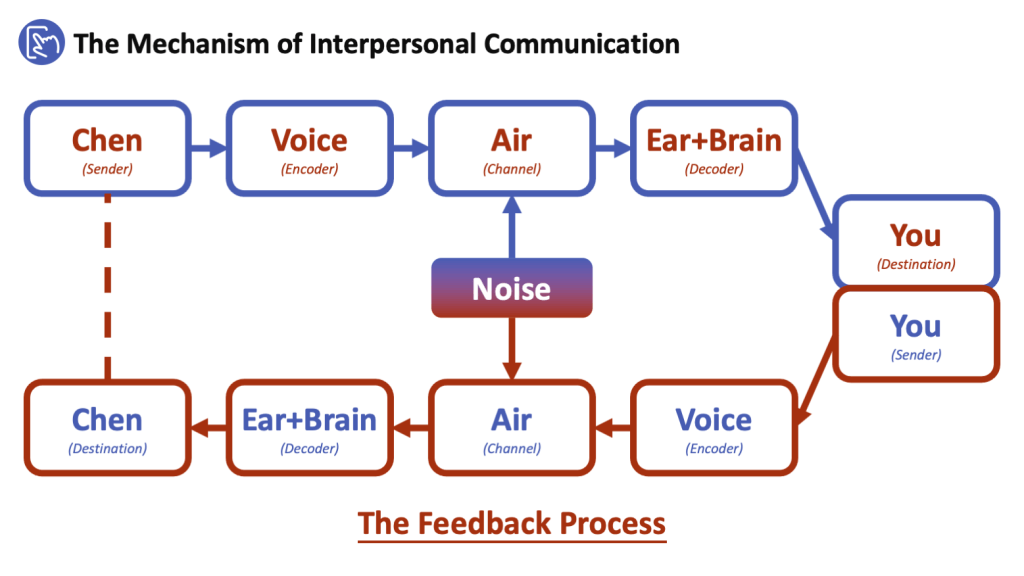
As the sender of the information, I transformed my thoughts into sound with the vibration of my vocal cords. Such sound was transmitted through the humid and hot air in my hometown and the location of my university, Guangzhou, as waves to your ears, followed by the process of decoding in your brains. Finally, you acquired and understood what I was saying, I hope. As for the stage called “feedback”, it completely reverses this process, referring to the exchange of the identities of the sender and the receiver.
It should not be neglected that noise is also an important factor of the information exchange during the process of interpersonal communication. For senders, taking myself as an example, if I cover my mouth with my hand (although not recommended during the pandemic), the clarity of my verbalization will drop dramatically. For the receivers, you for example, if you got distracted by some birds or butterflies outside the window, or your own business on your laptops, you might miss lots of information from the lecturer, especially during the Advanced Mathematics lessons, from which I suffered a lot before.
Here is an example of the imbalance status hit during the interpersonal communication. Without in-depth communication between couples, proposals often fail because they haven’t generated the same cognition on the appropriateness of establishing a stable intimate relationship.
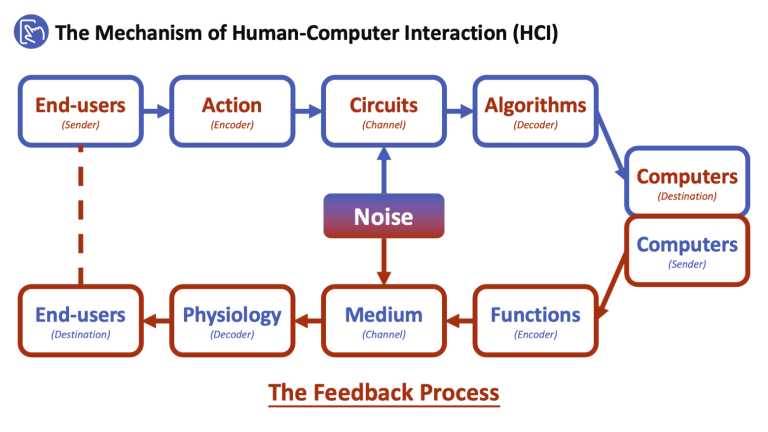
Actually, the mechanism of human-computer interaction shares a similar pattern with that of interpersonal communication. End-users like us send out the information about our thoughts and intentions through the encoded commands. Such commands are monitored by computers, transmitted through electric circuits in hardware, and decoded by preset algorithms in computers.
As for the stage of feedback, computers serve as senders, encoding responses into the clues in vision, sound, tactile sensation, etc. Such clues transmit through output devices like high-definition displays to our corresponding sense organs, and are decoded thereafter. Finally, we achieve the functions we require, or get annoying error feedbacks, such as the irritating blue screen errors.
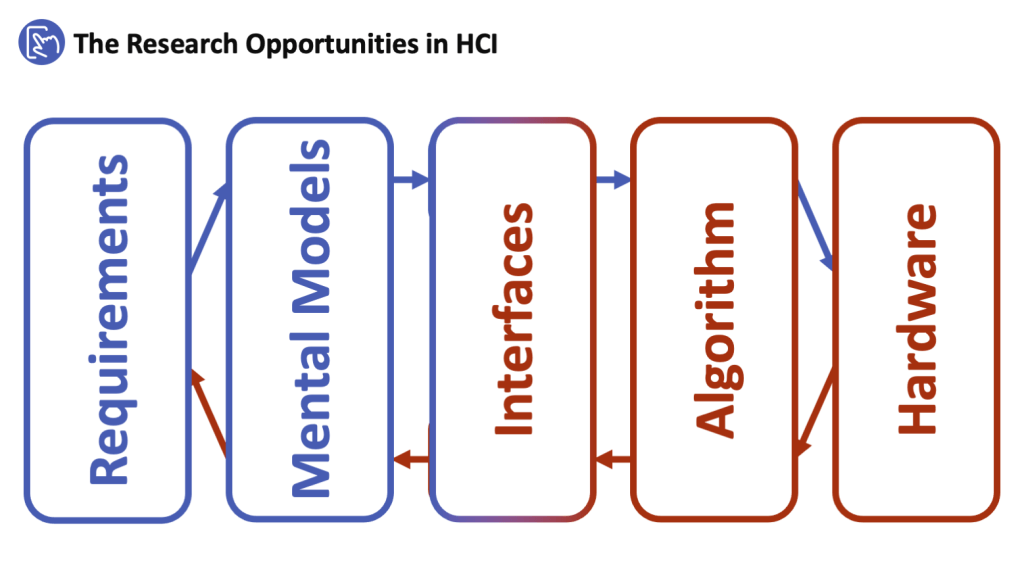
Let me further integrate the factors in this model, and show you some typical work in the world of human-computer Interaction. During daily research routines, we analyze users’ needs, typically through online surveys, brainstorming sections, and focus groups, which are three most prevalent methods in HCI. Then, we will apply the methodology of participatory design (PD) to the collection of users’ preferences and the evaluation of the qualities of computers’ feedback. This is called mental model. The next step is about the hub of information exchange, i.e., how computers receive users’ inputs and how users perceive the feedback. I call it “interface”. As for the other parts, they are closely related to computer design, including design of algorithms and hardware.
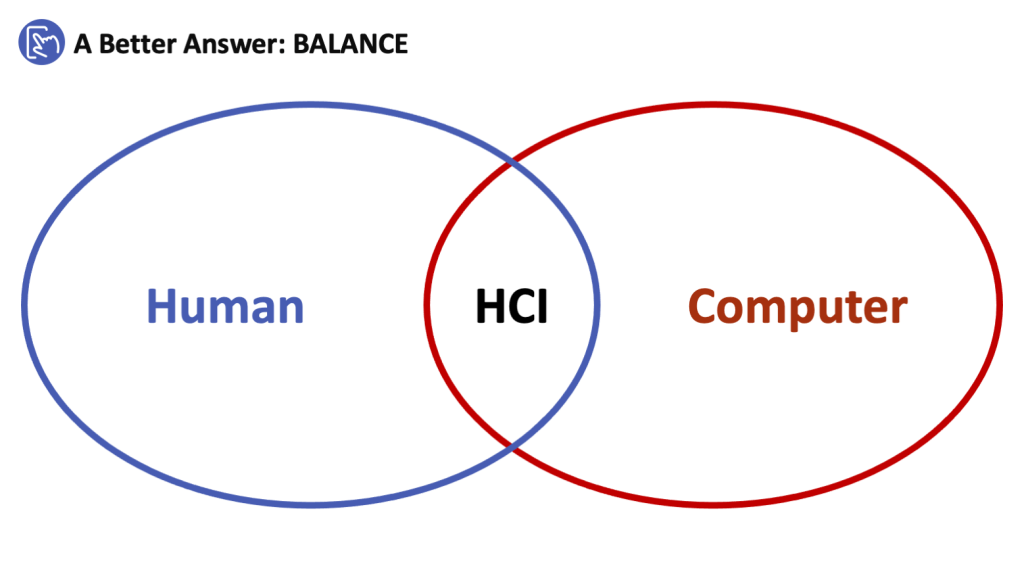
As you can see, finally, we hit a balance. Under ideal conditions, we are supposed to interact with our smart devices in an intuitive way, which is an ideal answer to the question of “what is human-computer interaction”.
However, we are now trapped in a status called “WIMP”, where we can only get unnatural interaction experience. More specifically, the experience we talk to and perform intuitive gestures to our computers to receive the results we need in an efficient way is quite poor.
So, in my future academic career, if possible, I am going try every effort to change the current imbalance status, and offer advanced interactive technologies for you.
